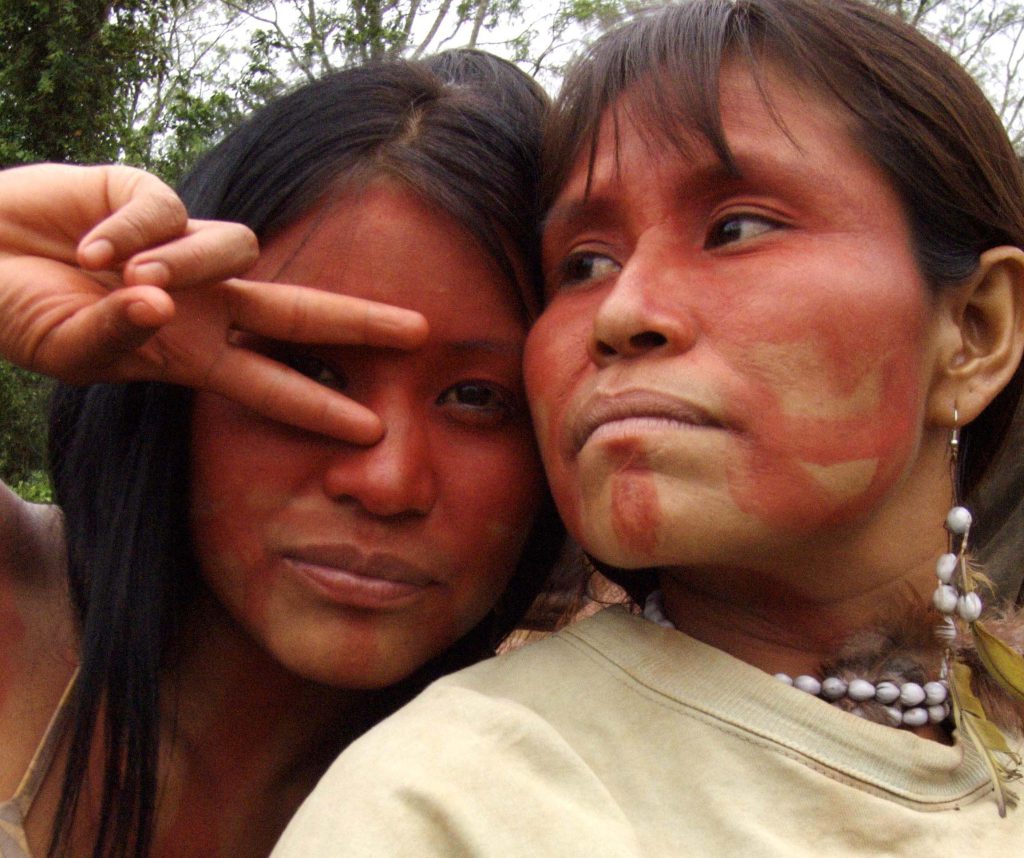- Film présenté cette année à Cinélatino
GARAGE OLIMPO (1999)
BIRDWATCHERS (2008)
- Direction
- Marco Bechis
- Country
- Italy, Brazil
- Format
- Feature film
- Type
- Documentary
- Original title
- Los indios kaiowas después del film
- Planned casting
- The five main indians actors and the secondary actors of the film Birdwatchers
- Scenario
- Marco Bechis
Marco Bechis
Filmography
Il sorriso del capo (2011)
BirdWatchers – La terra degli uomini rossi (2008)
Who knows Ezra Pound? (2003) Production Company
Buenos Aires: Sarajevo e ritorno (1999) Production Company
Luca’s Film (1997)
Note of intent
The making of the film was from the beginning a “cinematographic battle”. I knew that in order to do the film I wanted it was necessary a professional production. I didn’t want to make a documentary film because I didn’t want to get into the indian huts with my camera, trying to steal images from their real lifes. I wanted indian actors, not just indians to be filmed. “The Mission”, “Fitzcarraldo” and many others films with indians, have the same cast idea: main white famous actors and indians on the background. I changed the rules: my actors learned what is a cinematographic set and what is cinema language. It was not necessary to teach them how to act, they have an oral tradition and managed very well the acting techniques. In fact they are masters in rethoric when they deal with brasilian authorities and with us europeans. They keep private codes, after 5 centuries of colony they learned how to protect their secrets. I wanted to deal with them in an horizontal dialog, on an artificial set. Nobody in the film is using his real name, no hut shot in the film is a real one. Along the six month of preparation of the film I realized that they were using too much dialogues in the fictional improvisations. I understood they didn’t know at all what is silence in cinema, what is the power of an image on the screen. So I organized a screening of some sequences with no dialogues, with the original sound track and music. A piece with Clint Eastwood from “Once upon the West” by Sergio Leone and the historical scene from “Birds” by Alfred Hitchcock. They immediately understood and applied this technique along the film. Meeting them again it’s a new challange for me, I need to know what cinema has left there after six years. Cinema as a strange machine that arrives, uses everything and then desappears.
Synopsis
Going back to the locations of Birdwatchers to track down the protagonists: the Kaiowas. We don’t know yet where are some of them today. It’s been years since Birdwatchers was screened at cinemas in Brazil and around the world. The international press thenwas worried about the genocide of indigenous peoples. But the echo of that sound is already extinguished, muffled by the media whirlwind.
The film wants to answer some questions: What are the consequences of that movie today in the Kaiowas communities? Has Birdwatchers become an instrument of the indigenous resistance strategy? And if so, how?
The return to the filming locations will launch a two-level parallel narrative: making films after the film, connecting different times (2007-2013). A before and after to discuss Kaiowá today. But also to discuss the film and its inevitable political implications.
The actors, real Kaiowas, will talk about their own present, the return to daily life after the shooting, individual and collective hopes and difficulties they faced after the crew left.
Short stories, episodes, which collectively make up a story. Kaiowas actors and also key characters of the preliminary investigation: the anthropologist, the white inhabitants of Dourados (filming location) and the technical team.
Who owns the film then? Who is suitable and who took control of what and how? Who owns this story? What role can play the film at the distance of years? Is it a “racconto” still connected, that “shows”?
Is it an experience still alive among the Kaiowas? These are some of the questions that will guide the documentary film “The Kaiowas after the film” , with the aim to investigate how a film approaches the reality that intends to shoot, and examine the social and political context in which the art practice occurred.
Visual concept
The film will be divided in chapters, and the viewer will be able to see it in different manners: the hole film from the beginning to the end or in isolated chapters, for web platforms.

- Objectives sought in Films in Development
Looking after a coproduction and international distribution
- Shooting planned date
October-november 2013
- Planned shooting location
Mato Grosso do Sul
- Budget
- 240 mil euros
- Project's development phase
Ready for shooting










